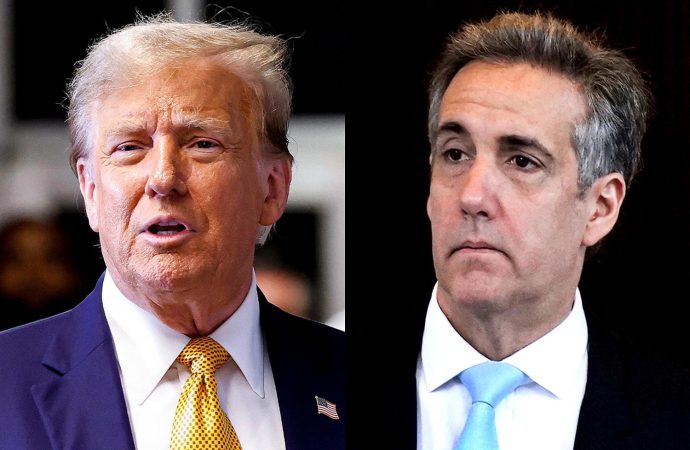Introduction The trial of former President Donald Trump has gripped the nation, centering on allegations that he orchestrated a hush‑money scheme to quash damaging stories during his 2016 campaign. At the heart of the prosecution’s case is Michael Cohen, Trump’s one‑time attorney, whose candid testimony directly ties Trump to the illegal payments. This article provides
Introduction
The trial of former President Donald Trump has gripped the nation, centering on allegations that he orchestrated a hush‑money scheme to quash damaging stories during his 2016 campaign. At the heart of the prosecution’s case is Michael Cohen, Trump’s one‑time attorney, whose candid testimony directly ties Trump to the illegal payments. This article provides a comprehensive overview of the trial’s most significant events and testimonies, illustrating how Cohen’s evidence became the cornerstone of the prosecution’s case.
Key Events in Trump’s Hush-Money Trial Michael Cohen’s Role
1. Origins of the Hush‑Money Scheme
In 2016, two women—Stormy Daniels and Karen McDougal—claimed to have been paid to stay silent about alleged encounters with Trump. The payments, prosecutors argue, were not personal gifts but campaign‑related expenses improperly labeled as legal fees in Trump Organization records. According to AP News, Trump personally directed Cohen: “Just do it,” in reference to the $130,000 payment to Daniels.
2. Cohen’s Guilty Plea Sets the Stage
In August 2018, Michael Cohen pleaded guilty to eight charges, including campaign‑finance violations, admitting he arranged the Daniels payment “at the direction of and for the benefit of” Trump. He was later sentenced to three years in prison. This plea established Cohen’s firsthand knowledge and laid groundwork for his role as star witness.
3. Indictment and Trial Commencement
Manhattan District Attorney Alvin Bragg indicted Trump on 34 counts of falsifying business records. The charges allege Trump recorded reimbursements to Cohen as “legal services” to conceal the hush‑money payments from voters. The trial began in April 2024, marking the first criminal trial of a former U.S. president.
4. Day 1–10: Foundation and Evidence
Early Weeks: Prosecutors introduced documentary evidence:
- Checks and Invoices: Eleven checks made out to Cohen totaling $130,000, with invoices marked as legal services.
- Bank Records: Show reimbursements from the Trump Organization to Cohen’s shell company.
This phase established the financial trail linking Trump Organization pages to Cohen’s bank accounts.
5. Michael Cohen Takes the Stand
In mid‑May, Cohen began his testimony. He faced intense scrutiny but provided detailed accounts of his interactions with Trump. Key moments include:
a. Direct Orders from Trump
Cohen testified that Trump explicitly instructed him to arrange the payments. “He expressed to me: ‘Just do it,’” Cohen recalled regarding the Stormy Daniels payment.
b. Involvement in the McDougal Payment
Cohen described discussions with Trump about Karen McDougal’s story. Trump told him, “Make sure it doesn’t get released,” Cohen said, confirming his role in negotiating a $150,000 payment for McDougal’s silence.
c. Secret Recording Admitted
A secretly recorded 2016 conversation between Trump and Cohen was played in court. In it, Trump asks, “So, what do we got to pay for this? One‑fifty?” referring to the McDougal payment.
6. Cross‑Examination Drama
Trump’s defense sought to undermine Cohen’s credibility, highlighting:
- Cohen’s Guilty Pleas: His past lies to Congress and investigators.
- Financial Motive: Allegations he expected a pardon or job in a Trump administration.
- Memory Lapses: Inconsistencies between Cohen’s statements and earlier testimony.
Yet prosecutors countered by tying Cohen’s testimony to hard evidence—checks, emails, and accounting entries—making his recollections more persuasive despite his past misconduct.
7. Supporting Witnesses and Corroboration
Beyond Cohen, other witnesses strengthened the prosecution’s narrative:
- Allen Weisselberg: Trump Organization CFO testified that reimbursements to Cohen were logged as legal expenses at Trump’s direction.
- Douglas Daus: A tech analyst confirmed the authenticity of Cohen’s seized iPhone recordings, including discussions of hush payments.
- Karen McDougal & Stormy Daniels: Both women provided affidavits and recordings, though they did not testify in person.
These testimonies and exhibits formed a cohesive story of a coordinated effort led by Trump to influence the 2016 election.
8. Key Legal Arguments
Prosecution’s Case
- Campaign Finance Violation: Payments intended to influence the election by suppressing negative stories.
- Falsified Records: Trump falsified corporate documents to hide reimbursements, violating New York law.
Defense’s Case
- Personal Transactions: Claims that payments were personal legal matters, unrelated to the campaign.
- Cohen’s Unreliability: Focus on Cohen’s criminal history to discredit his testimony.
Judges instructed jurors to focus on the evidence of intent and record‑keeping practices rather than the underlying allegations of an affair.
9. Jury Deliberations and Verdict
After four weeks of testimony and closing arguments, the jury began deliberations. On May 30, 2024, the jury found Trump guilty on all 34 counts of falsifying business records—a historic verdict making him the first former president convicted of a crime.
10. Aftermath and Appeals
Trump’s legal team immediately announced plans to appeal, arguing procedural errors and judicial bias. Meanwhile, Cohen’s testimony remains a landmark moment, showcasing the power of insider evidence when backed by documents and recordings.
Conclusion
The hush‑money trial against Donald Trump hinged on Michael Cohen’s testimony, which vividly linked Trump to all aspects of the scheme—from direct orders to cover‑up payments. Through documentary proof, secret recordings, and corroborating witnesses, prosecutors built a robust case that led to Trump’s historic conviction on 34 counts of falsifying business records. While appeals may follow, the trial underscores how focused, insider testimony can transform complex financial misconduct into a compelling legal narrative. As this chapter closes, the role of digital evidence and sober witness accounts will continue shaping high‑stakes political trials for years to come.
















